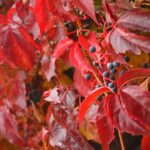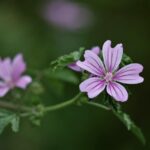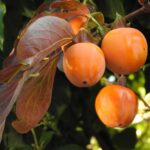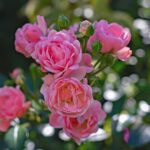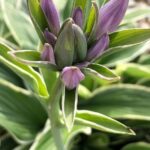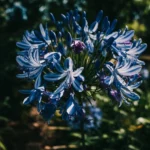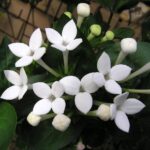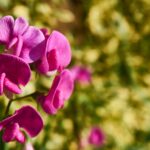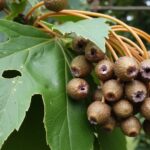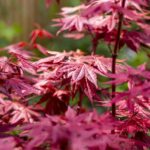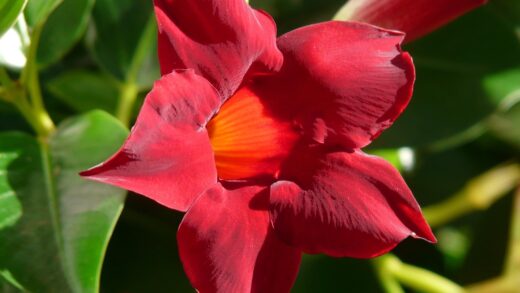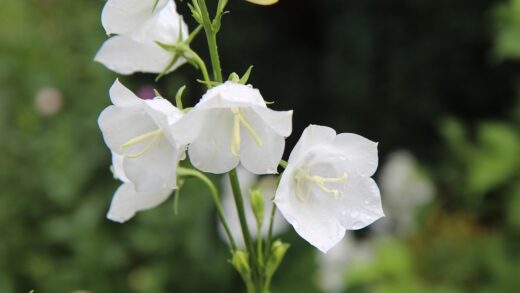Common lavender, known by its Latin name Lavandula angustifolia, is one of the most beloved and well-known perennial semi-shrubs, captivating not only with its fragrance and appearance but also with its versatile uses. This Mediterranean native requires relatively little care, but achieving abundant flowering and a healthy, compact bush form necessitates adherence to a few fundamental care rules. From proper soil preparation and expert pruning to wintering, every small detail contributes to making lavender the jewel of the garden or balcony. Let us, therefore, delve into the specifics that will allow our lavender to reach its most beautiful form year after year and generously reward us with its fragrant flowers.
Lavandula angustifolia, often called French or medicinal lavender, is the most valuable and widespread variety, also cultivated in Tihany, among other places. This plant originates from the Mediterranean region, where it is native to rocky, dry slopes. It has adapted well to the Hungarian climate and, with proper care, can live for up to 40-50 years. A mature plant can reach a height of 60-80 centimeters with its flowers, and the diameter of its bush can be 80-100 centimeters.
Although lavender is generally a resilient and healthy plant, improper conditions or overwatering can make it susceptible to certain diseases and pests. It is important to note that care begins with the young plant still in its pot; trimming the new shoots encourages a bushier growth. Regular pruning not only maintains the plant’s shape but also promotes richer flowering. Care tasks, therefore, span the entire growing season and do not end with the onset of winter.
Lavender is not only an ornamental plant but also a spice and medicinal herb. Its flowers and leaves can be used in many ways, such as for making fragrant pillows and potpourris, but it also has a place in gastronomy and natural medicine. Its essential oil is highly valued by the cosmetic and perfume industries. With proper care, we can cultivate not only a beautiful plant but also a versatile, valuable “home pharmacy” and spice.
Selecting the right growing site
The foundation of successful lavender cultivation is choosing the perfect location. As the plant originates from the Mediterranean region, it loves sunlight and warmth. The most ideal location for it is a south-facing, sheltered spot where it receives at least six hours of sunlight daily. This abundant sunlight is essential for profuse flower formation and the development of a high concentration of essential oils. Shady places should be avoided as they reduce growth and flowering.
More articles on this topic
Soil quality is also crucial. Lavender prefers well-drained, rather alkaline or neutral pH, nutrient-poor soils. Sandy, gravelly, loose-structured soil that does not retain excess water is the most suitable. If the garden soil is heavy clay, its structure must be improved by adding sand and gravel before planting to prevent waterlogging, which can lead to root rot.
Lavender tolerates drought well, so it can be planted in rock gardens or on dry, barren slopes, where it protects the soil from further erosion. However, it is important to avoid frost-prone, cold, low-lying areas where late spring frosts can damage the newly emerged shoots. The plant can withstand temperatures as low as minus 15-20 degrees Celsius, but it can be sensitive to sudden temperature fluctuations.
When grown in pots or containers, it is also important to provide the right conditions. The pot should have drainage holes at the bottom, and it is advisable to place a layer of gravel at the bottom of the pot for better drainage. Potted lavender should also be placed in a sunny, sheltered location. In terms of nutrients, lavender has modest needs, and excessive fertilization should be avoided as it stimulates excessive foliage growth at the expense of flowering.
Watering and nutrient supply
Lavender’s water requirement is relatively low; it is considered a drought-tolerant plant. This characteristic is due to its Mediterranean origin, where it has adapted to hot, dry summers. Mature plants planted in the open ground are often content with natural rainfall and hardly need any watering. Overwatering is one of the most common mistakes in its care, leading to root rot and the plant’s demise.
More articles on this topic
However, newly planted young seedlings require regular but moderate watering until they are established. After planting, the plant should be watered thoroughly, and then the soil moisture should be monitored in the following weeks. The best strategy is deep but infrequent watering, rather than frequent, small amounts of water. During prolonged, extremely hot, and arid periods, even mature plants will appreciate occasional watering, but this should also be done in moderation.
Lavender grown in pots has a higher water requirement than its counterparts in the garden, as the soil in pots dries out more quickly. These plants need to be watered more regularly, but here too, avoiding waterlogging is crucial. Always check the soil moisture before watering and only add water when the soil has dried out. In winter, the water requirement of potted lavender decreases drastically; a light watering once a month may be sufficient.
In terms of nutrient supply, lavender has extremely modest needs. Excessive fertilization, especially with high-nitrogen fertilizers, stimulates lush foliage growth at the expense of flowering. A small amount of mature compost or manure mixed into the planting hole at the time of planting is sufficient for initial development. Subsequently, no further feeding is usually necessary. If you still want to encourage flowering, there are mineral fertilizers specifically developed for Mediterranean plants with low active ingredient content, but these should also be used in moderation.
The importance and correct technique of pruning
One of the most critical elements of lavender care is regular and professional pruning. Neglecting this leads to the bush becoming leggy and woody, the plant produces fewer flowers, and in the worst case, it can even split in half. Pruning stimulates the growth of new shoots, promotes a bushy habit, and maintains the plant’s compact, rounded shape. A well-maintained, regularly pruned lavender bush will reward the care with more abundant flowering year after year.
It is advisable to prune lavender at least once, but ideally twice a year. The most important pruning is in the spring, which should be done after the frosts have passed but before the plant’s intensive shoot growth, usually between late February and mid-March. At this time, the plant can be cut back more vigorously, by up to two-thirds, but care must be taken not to cut into the woody parts, as it will have difficulty sprouting again from there. Always leave green leaves on the stems.
The second pruning takes place in the summer, after the main flowering, usually during July-August. At this time, the faded flower stalks should be removed, and the bush should be cut back by about one-third. This summer pruning not only serves to shape the plant but can also promote a second flowering in the autumn. It is important to harvest the flowers in dry weather, especially if you want to dry them.
Older, neglected, leggy bushes can also be rejuvenated with a more vigorous spring pruning. In this case, cutting back the lowest branches close to their origin at the base of the bush every 2-3 years can stimulate the growth of new shoots in the lower parts. Always use sharp, clean pruning shears for pruning to avoid injuring the plant and spreading diseases. Mastering the correct pruning technique will ensure that your lavender remains a healthy and profusely flowering ornament in the garden for many years.
Propagation methods
The easiest and most common method of propagating lavender is by cuttings. This method of vegetative propagation ensures that the new plants are genetically identical to the mother plant, thus preserving all its favorable characteristics, such as flower color and fragrance. The best time for taking cuttings is in the spring, in conjunction with pruning, but it can also be attempted in late summer or autumn. In spring, it is advisable to use the already woody, one-year-old shoots, while in late summer, green shoots should be used.
The steps for taking cuttings are simple. Choose a healthy, strong mother plant that is at least 3-4 years old. Cut 8-15 cm long shoots from it. Remove the leaves from the lower part of the cuttings to reduce transpiration. It is advisable to cut the end of the shoot just below a leaf node, possibly at a 45-degree angle, to increase the rooting surface. To promote rooting, the ends of the cuttings can be dipped in rooting hormone powder.
The prepared cuttings should then be placed in a moist rooting medium, such as a mixture of sand and potting soil, peat mixed with perlite, or even just water. It is important to keep the medium constantly moist, but not waterlogged, as this can lead to rot. High humidity promotes rooting, so it is advisable to cover the cuttings with plastic wrap or a plastic bottle. The development of roots usually takes 1-1.5 months, after which the young plantlets can be planted in separate pots or in their final location.
Lavender can also be propagated by division and from seed, although these methods are less common. Division can be used on older, large bushes in early spring or autumn. Seed propagation is more difficult because the seeds require a period of cold to germinate, so it is advisable to sow them in the autumn. The characteristics of plants grown from seed can be variable and may not necessarily inherit the traits of the mother plant.
Pest and disease control
Lavender is generally an extremely resilient plant that is avoided by most pests and diseases. Its intense essential oils provide natural protection, and it even protects other plants, such as roses, from aphids and ants. For this reason, plant protection interventions are rarely necessary in lavender care. Nevertheless, certain conditions, such as poor drainage, overwatering, or too dense planting, can favor the development of some problems.
The most common problem is fungal diseases, especially root and crown rot, which is caused by waterlogging. The symptoms of this are wilting, yellowing, and then the death of the plant. The key to prevention is to ensure well-drained soil and to avoid overwatering. Another fungal disease, Septoria leaf spot (Septoria lavandulae), causes small, dark spots on the leaves, which later turn grey. Grey mould (Botrytis cinerea) can attack the inflorescence and shoots in rainy, cool weather. The basis of control is prevention: maintaining adequate spacing for good air circulation and immediate removal of infected parts.
Pests rarely cause significant problems. Aphids may appear on the plant, but they usually do not cause serious damage. Spittlebugs, such as the larva of the froghopper, live in the characteristic “cuckoo spit” foam masses on the stems, but this does not significantly harm the plant either. Aphids can pose an indirect threat as they can transmit the alfalfa mosaic virus, which is the only known viral disease of lavender. This virus causes yellowing and curling of the leaves. Control consists of action against the insect vectors and disinfection of pruning tools.
Prevention is therefore the most effective control strategy. Using healthy, certified propagation material, selecting the right growing site, avoiding waterlogging, and maintaining an airy plant stand all contribute to keeping our lavender healthy. If a problem does occur, destroying the diseased plant parts can prevent it from spreading further.
Wintering lavender
Although the French lavender (Lavandula angustifolia) common in Hungary is generally winter-hardy, and mature, field-planted bushes tolerate the cold well, it is advisable to take a few precautions for successful overwintering. The plant can withstand temperatures as low as minus 15-20 degrees Celsius, but late spring or sudden, severe frosts can damage it. Preparation can begin at the time of planting by placing the plant in a south-facing, sheltered, frost-protected spot.
Overwintering lavender in the open ground generally does not require any special intervention. The most important thing is not to prune the plant in the autumn, as it can suffer frost damage more easily through the fresh cut surfaces. Spring pruning is recommended instead of autumn pruning. For younger, more sensitive bushes, mulching the soil around the base of the plants with straw, leaves, or pine bark can help protect the root system from hard frosts. However, care should be taken to ensure that the mulching material does not come into direct contact with the base of the plant to avoid rot.
Overwintering lavender grown in pots or containers requires more attention, as their root systems are more exposed to the risk of frost. There are several options for their protection. One solution is to sink the pot into the ground in a sheltered part of the garden, for example, at the base of a wall, and cover the top with soil or mulch. Another method is to wrap the pot with insulating material, such as burlap or bubble wrap, and place it on an insulating sheet (e.g., polystyrene) to prevent it from cooling from below.
Potted lavender can also be brought indoors for the winter to a bright but cool room, such as an unheated veranda, garage, or staircase, where the temperature is around 5-10°C. Overwintering in a warm, heated room is not recommended. During the winter, watering should be reduced to a minimum; it is sufficient to give enough water to prevent the soil from drying out completely. Fertilizing and pruning are strictly forbidden during the winter months.
Harvesting and use
Harvesting lavender flowers is a special experience, the timing of which largely depends on the intended use. In Hungary, flowering generally begins in early June and lasts until the end of July, but in favorable weather, there may be a weaker second flowering in the autumn. The essential oil content is highest when the flowers are fully open, a period that usually lasts only 7-10 days. Lavender intended for industrial purposes, for essential oil distillation, is harvested at this time.
If you want to make dried flower bouquets or potpourri, it is advisable to cut the flowers earlier, before they are fully open. The best time is when the lower flowers of the inflorescence have opened, but the majority are still in bud. If harvested later, the flowers will easily fall off the stems during drying. Harvesting should be done in the early morning hours, as the essential oil content of the flowers is most concentrated at this time.
For drying, the cut flower stalks should be tied into small bunches and hung in a dry, airy place protected from sunlight. Direct sunlight will cause the flowers to lose their beautiful purple color. After drying, the flowers can be stripped from the stems and stored in airtight jars or linen bags. In this way, dried lavender can retain its fragrance and usability for years.
The uses of lavender are extremely diverse. The dried flowers can be used to make moth-repellent scent bags for wardrobes, soothing tea, to scent bathwater, and even to flavor cakes, jams, and syrups. Fresh flower stalks also look beautiful in a vase. Its medicinal properties are also well-known: it has calming, antispasmodic, anti-inflammatory, and antiseptic properties, which is why it is popularly used in aromatherapy and folk medicine to relieve sleep disorders, headaches, and anxiety.


